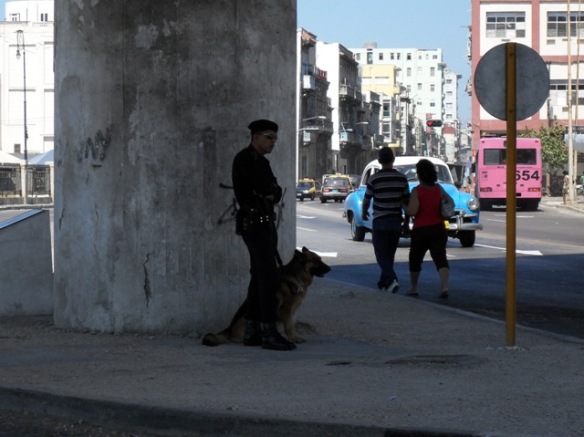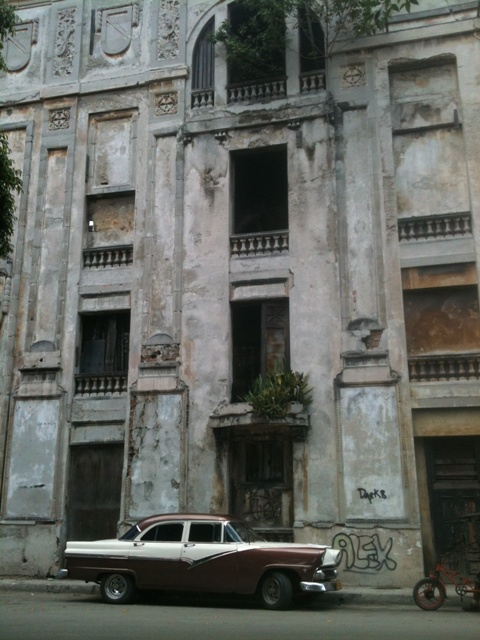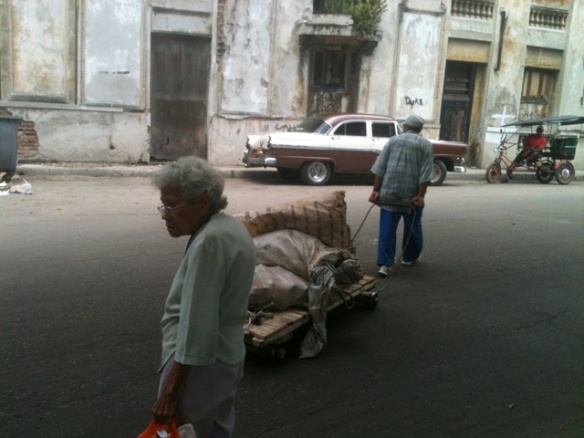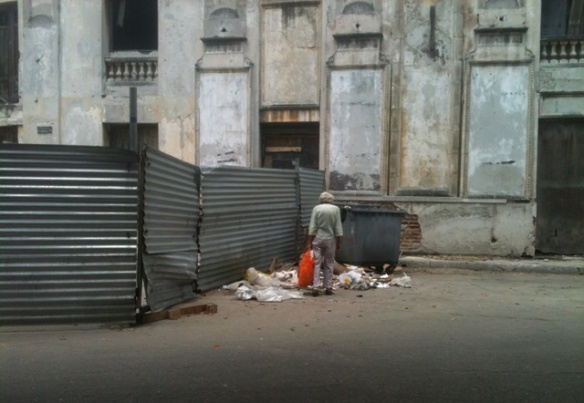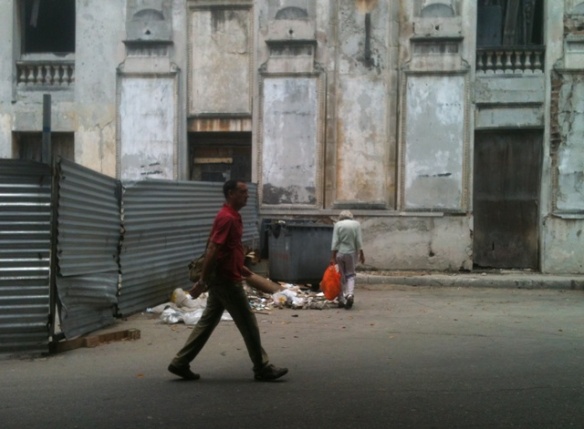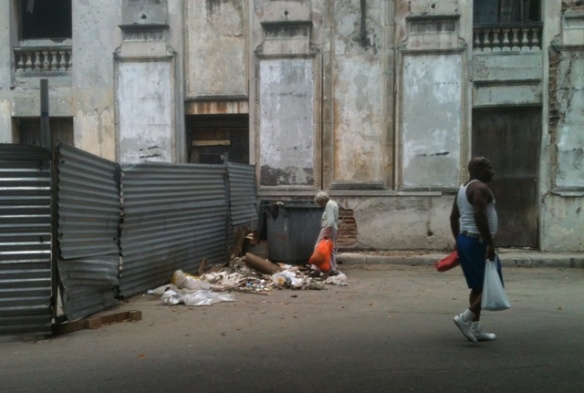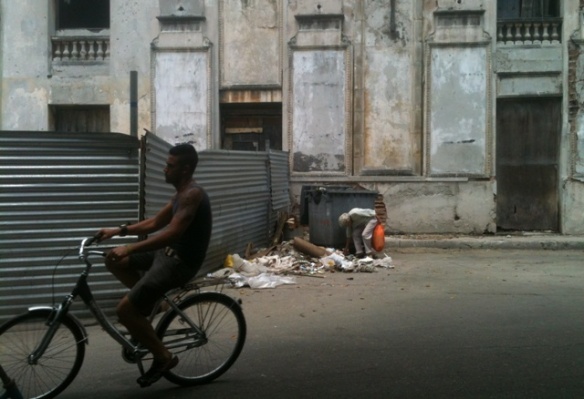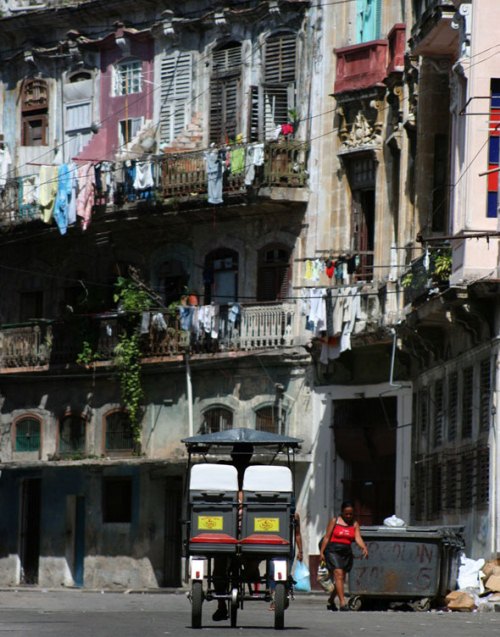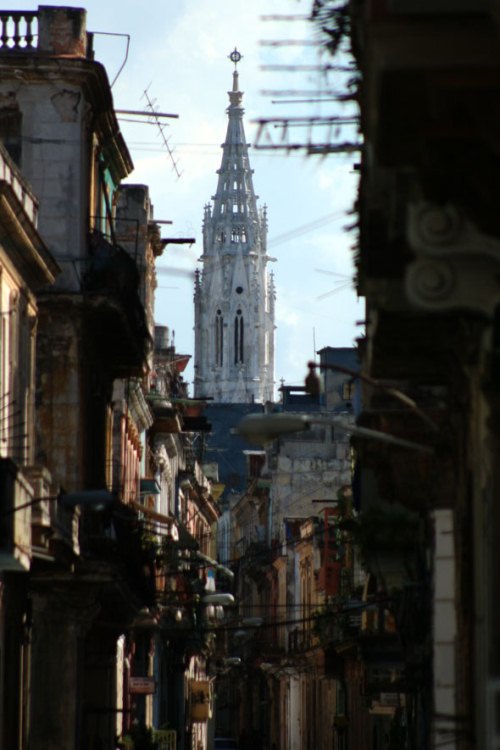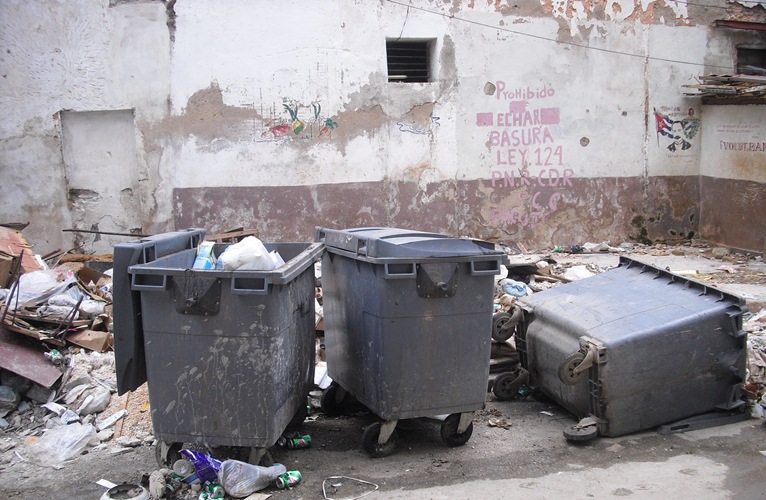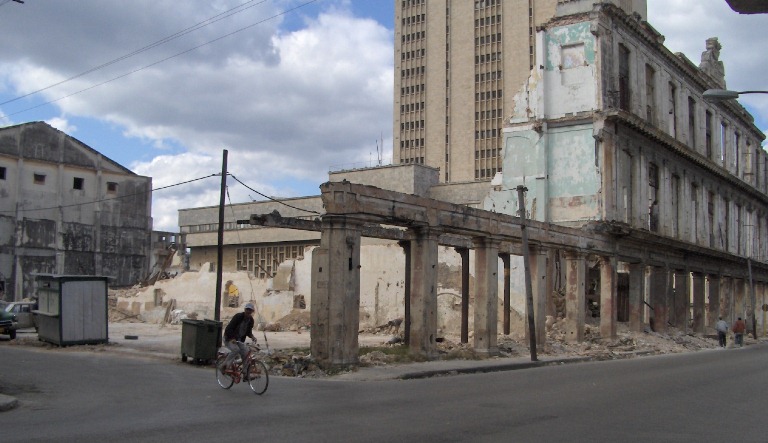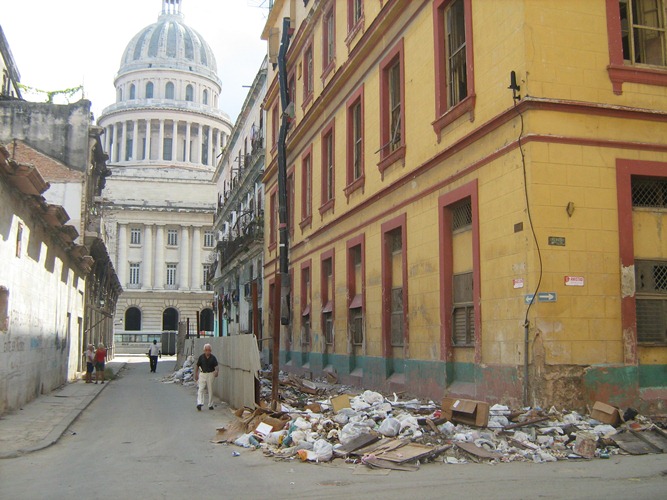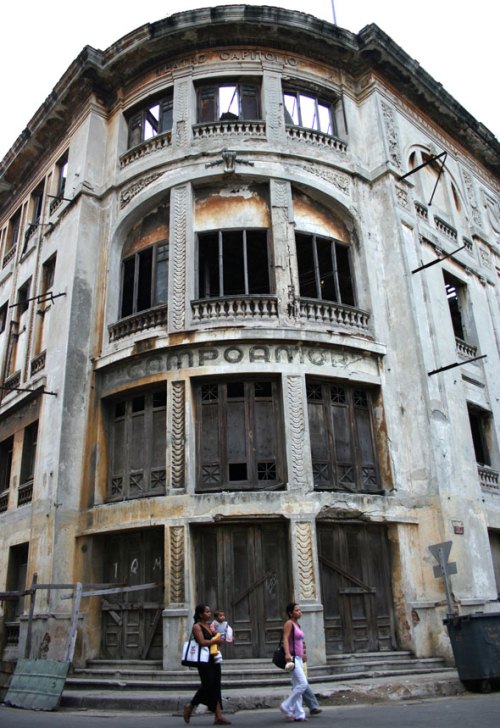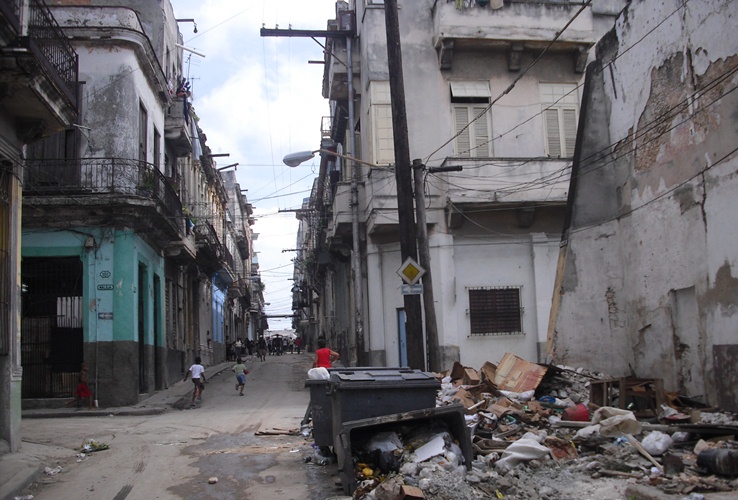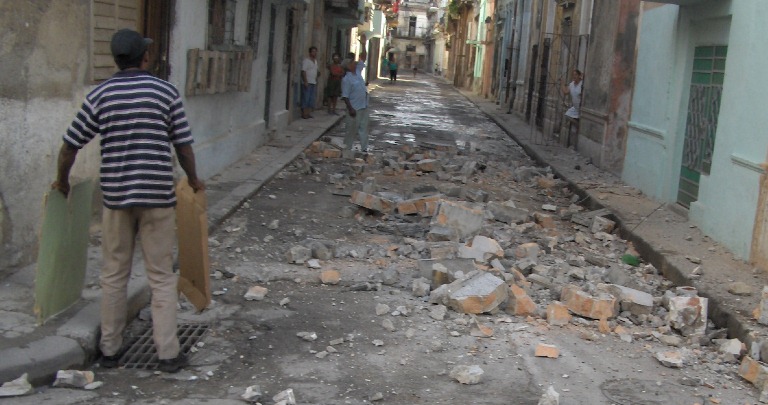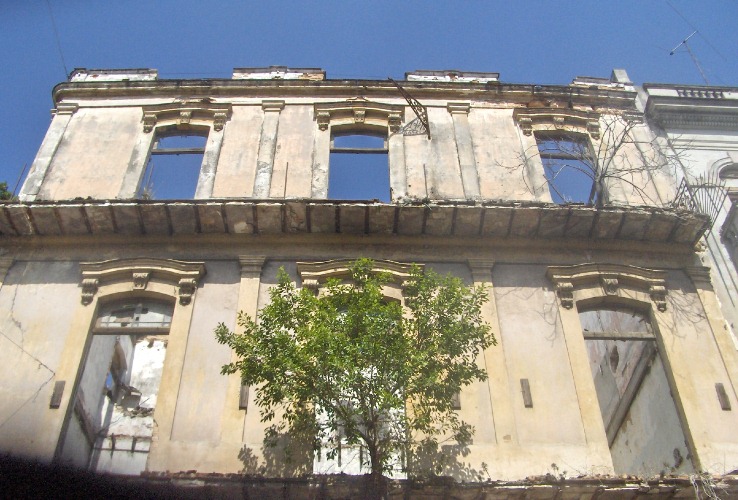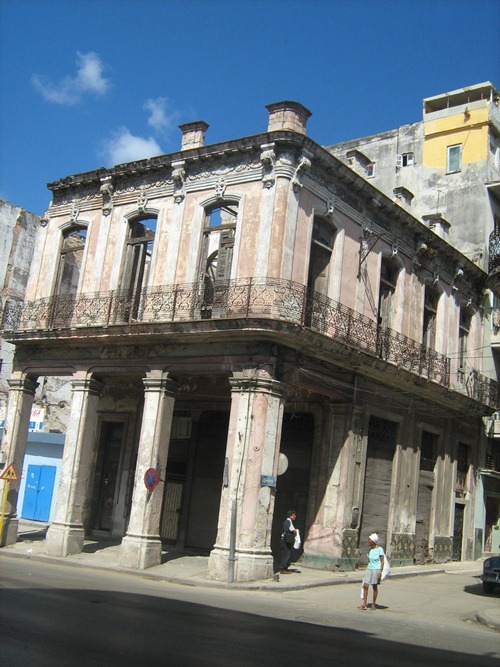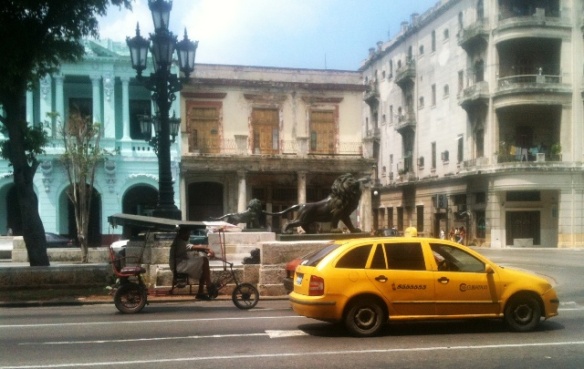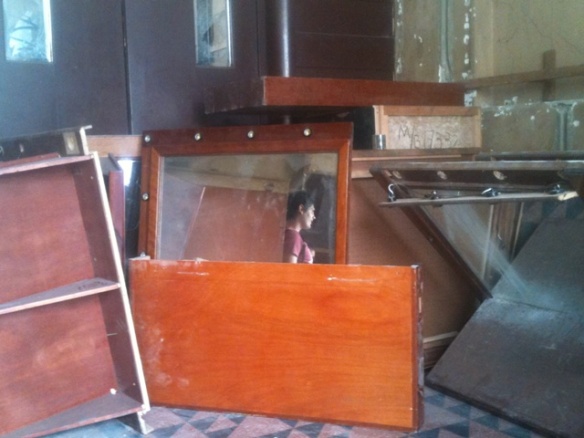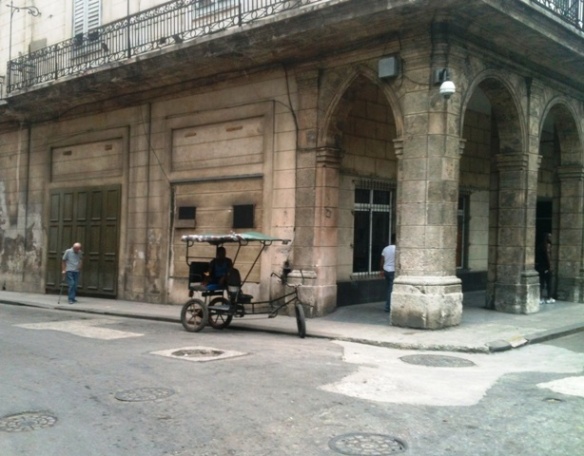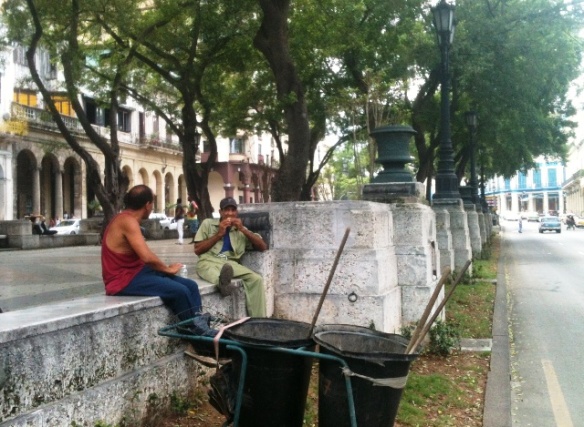Prosecution’s Case Delivered to Sonia Garro’s Sister / Augusto Cesar San Martin
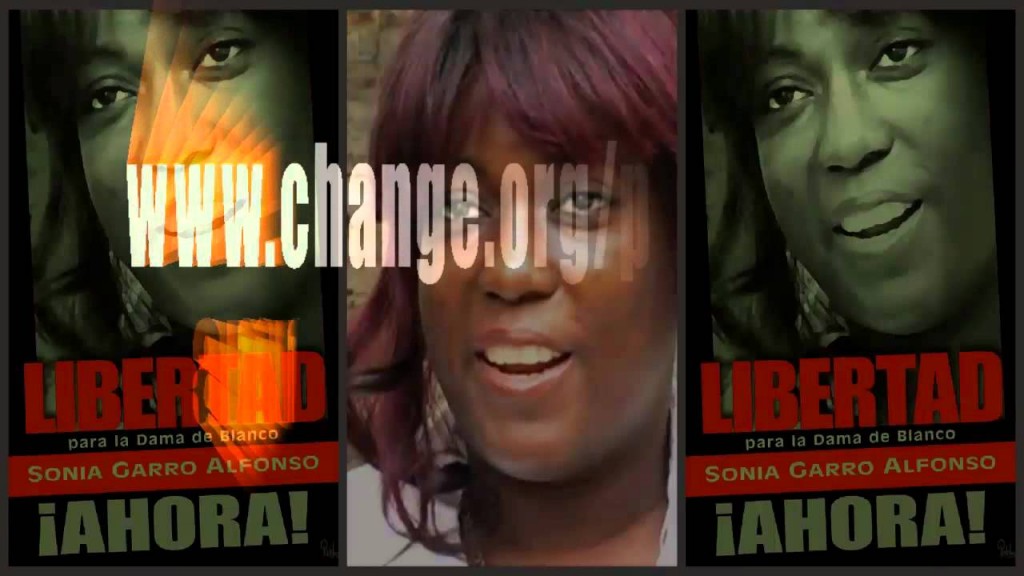
HAVANA, Cuba , September 20, 2013 , Augusto César San Martín Albistur / www.cubanet.org.- The Preparatory Phase Record (EFP ) No. 9 of 2012 , from the investigative body of the Department of State Security (DSE), against Lady in White Sonia Garro, was delivered this afternoon to the Carlos III Law Collective, to her sister Yamilet Garro.
The digital document has not yet been officially delivered to Sonia and Ramon, who have known informally the government’s case, based on Attack, Contempt and Attempted Murder.
The delivery was made by the lawyer Belkis Maura, in charge of the proceedings of the defense until the arrival in the country of the lawyer Amelia Rodriguez Cala, appointed to the case. The lawyer said that “The time to offer their conclusions is short and the prisons are distant”; this is the reason that the parties do not have the prosecutor’s report.
Maura said that none of the events described by the prosecution rise to Attempted Murder. She considered it an error to give this magnitude to the case.
So far, there is no trial date, but the lawyer believes that it will be in October.
The EFP signed by Vivian Perez Perez, the case prosecutor, includes medical certificates of the police injuries. Perez states that they were attacked by Sonia Garro Alfonso, Ramón Alejandro Muñoz (Garro’s husband), and Eugenio Hernandez Hernandez.
The document states that the accused, plotting together, conceived the idea of creating disturbances on March 18, 2012 at the intersection of 47th and 118th Streets in the municipality of Marianao.
According to the prosecutor’s conclusion for this purpose, the defendants “collected glass bottles, jars, old car tires, TV screen tubes,… fast burning flammable products such as gasoline, oil, lye.”
The report details the objects seized and their destruction, as well as a forensic analysis of fuels found in Garro’s home. According to prosecutors, they were “Molotov cocktails,” prepared for the assault.
In this regard, Yamilet Garro said “the items were for lighting during the blackouts that are quite common in the area.”
The report adds that the Lady in White and Ramón Alejandro were confronted by the Special Tactics Police group. The prosecution claims Aresley Favier Calvo, one of the specialized police ran the risk of being killed when they threw objects that made him fall off a ladder.
The investigation described in the file refer to statements of the government opponents “against the revolutionary process,” which is mentioned as an aggravating factor.
The prosecution asks for 3 years for Sonia Garro for the crime of Assault, 5 Years for Public Disorder, and 8 years for Attempted Murder, with a combined sentence of 10 years.
For Ramon Alejandro Muñoz , it is asking for 5 five years for Public Disorder and 10 years for Attempted Murder, with a combined sentence of 14 years.
For Eugenio Hernandez, it is asking for 4 years for Public Disorder and 8 years for Attempted Murder, with a combined sentence of 11 years.
The government named as witnesses :
Daylin Nuñez Leal, Lisnay Arriete Durruti, Yurisleydi Almendares Alcalea, Pedro Enrique Alí Álvarez, Arisley Calvo Favier, Argelio Irsula Sastorre, Leonides Rodríguez Pérez, Mario Javier Betancuort, Iván Hernández Hernández and Oleinis Naranjo, members of the Police.
Also called will be: María Cristina Hernández Sierra, an official of the municipal government; the captain of the DSE, Yurisán Almendares Alcalea; and neighbors of the area, Yilian Carballosa Cruz, Josefina Milián Sánchez and Sonia Esther Díaz Reyes.
The Human Rights activist Sonia Garro has been in prison since March 2012.
From Cubanet
20 September 2013
Other Lost Traditions / Fernando Damaso
Importing traditions (the circus of the yellow ribbons* is one example) seems to be the fashion, with the goal of entertaining the public, despite great governmental dedication and the poor treatment of the citizens, with respect to the spectacle mounted on 12 September.*
If it’s about traditions, instead of importing them, it would be convenient if the authorities restored some of the democratic ones that existed during the fifty-six years of the Republic, which were abolished at the stroke of a pen.
I will not dwell on the festivals and the line, which are also worthy, but those in another group, within which we can cite: the right to freely express opinions, and to make them available in the corresponding organs of the press; to elect the president of the country and his counterparts in the provinces and municipalities, through a direct vote of the citizens, in elections where candidates from different parties compete; to all the free development of private initiative, without medieval laws or regulations, which present obstacles and impediments; to facilitate free access to information for all citizens; for parents to be able to decide which school — public or private — they want to educate their children; to respect differences of all kinds; to decriminalize wealth; to let the provincial and municipal organs of power possess real power to solve the problems of their communities, and to stop being mere appendages of the central power; to let the unions respond to the interests of the workers and not to those of the Party, the government and the administration; to let social organizations multiply and for belonging to them to be truly voluntary, according to the interests and desires of each person.
There are many other democratic traditions that also should be restored, but those mentioned are enough.
If this were to happen, which seems almost impossible currently, then perhaps we could start to believe in the good intentions of the government to resolve the problems of the Nation.
*Translator’s note: Fernando is referring to the “circus” around the government’s decision to drape Cuba in yellow ribbons — an American tradition but not a Cuban one — to demand the release of the four remaining spies in prison in the US, and the dance party mounted at the “Protestdrome” on September 12, in support of this objective.
19 September 2013
Esbirros* / Fernando Damaso
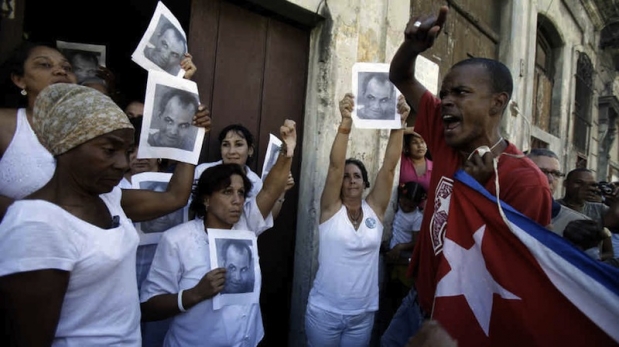
The word esbirro*, to designate someone who committed acts against human dignity, including torture and murder, sheltered by the impunity of service to the Government, began to be used in Cuba during the dictatorship of General Gerardo Machado, back in the 1930s. In the 1950s, during the dictatorship of General Fulgencio Batista, it was taken up again.
Duly constituted authorities are one thing, necessary in any social system to maintain citizen order and peaceful coexistence, acting in accordance with the laws, and it’s another thing to have people (men and women) who, sheltered by that same authorities, commit acts against people, whether physical, moral or psychological.
On coming to power in 1959, it was declared that there would be no more “esbirros,” and that members of the armed bodies would act respectfully towards citizens, as they should. The majority of Cubans applauded this declaration. But with the passage of time, certain words and promises were forgotten: today, the “profession” is one again practiced.
Those who exercise it today employ psychological torture and, often, “going in with hands and feet,” use physical aggression (what are they but the beatings of those who think differently, be they men or women, with contusions, broken heads and arms, loss of teeth, etc?). Not to mention economic harassment, abuse and humiliations. Numerous events, related by the victims themselves, confirm it, as do the numerous images captured by cellphones and put on the web. As you see, we have those who exercise the profession again, although they promised us it wouldn’t happen again.
When a government has to go to these people to instill fear, it shows weakness and the inability to compete in the realm of ideas, although they organize and engage in prolonged “battles” for that purpose. In addition, whomever practices the profession and is used today, will be abandoned to his fate tomorrow, and will have to answer for his acts before the justice of a democratic society. Our history is rich in examples. It’s hard to know if our current “practitioners,” the active esbirros and the esbirros-in-training, have thought about that.
There are “government esbirros,” who are paid monthly salaries for positions in the gang, and the “self-employed esbirros,” who, although not paid salaries, receive certain collateral benefits, such as to not be interfered with if they practice illegal economic activities, protected by the facade of “Revolutionaries,” according to the dogmatic content that the authorities give this word.
These characters, to feel safer, only arrive on the scene by government call, making an appearance at times and places they indicate. They easily stand out as the most “enraged” among the “enraged people,” the official euphemism for the mobs mobilized against those who think differently and act accordingly. Among these “enraged,” their activism and violence are in direct relation to the amount of “dirty laundry” they treasure.
This profession has always been reason for scorn, even by those who use them. It’s a shame to see how young people of both sexes, and people not so young, lend themselves to it, erroneously believing they are carrying out a patriotic task in defense of the nation. Sadly, it’s a mistake that will always weigh on their lives. More than hated, they should be pitied, because what they are doing is mortgaging their own futures as free citizens in a democratic society.
By Fernando Dámaso
*Translator’s note: Esbirro translates variously as goon, thug, henchman.
From Diario de Cuba
19 September 2013
Sacrilege at the Protestdrome / Jorge Olivera Castillo
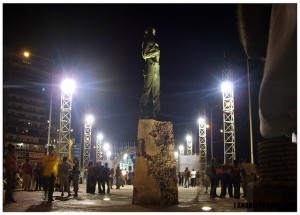 HAVANA, Cuba , September www.cubanet.org – The musician Robertico Carcassés crossed the line. According to his detractors, he chose the least appropriate time and place to ask for — in addition the release of the four Cuban spies and the end of the “blockade,” as dictated by the script of the show — free access to information, the ability to elect the country’s president by direct vote, the end of the internal blockade imposed by the Communists, and freedom for… “Maria.”*
HAVANA, Cuba , September www.cubanet.org – The musician Robertico Carcassés crossed the line. According to his detractors, he chose the least appropriate time and place to ask for — in addition the release of the four Cuban spies and the end of the “blockade,” as dictated by the script of the show — free access to information, the ability to elect the country’s president by direct vote, the end of the internal blockade imposed by the Communists, and freedom for… “Maria.”*
He asked for all this while singing at a televised concert held a few days ago at the Anti-imperialist Bandstand — which people call the “Protestdrome” — the usual site of the anti-Yankee dance parties organized by the government. This time, the goal of the spectacle was to mark the fifteenth anniversary of the imprisonment of the spies-heroes and, of course, to once again demand that the Yankees release them.
Robertico immediately became an outcast. He was banned indefinitely from performing on stages and in the media owned by the government; that is, all of them. The incident should be enough to shut the mouths of those who talk about a relaxation of censorship in Cuba. The spaces for self-expression, the topics discussed and what can or cannot be said, continue to be dictated by the official agenda.
Crossing the line when it comes time to criticize is still dangerous. The “new airs of freedom” are only symbolic; part of a plan of image improvement to create the illusion of an opening. Pure marketing.
Except for some intellectuals, writers, artists and academics, who now and again speak critically about the country’s problems, the majority prefers to entrench itself in silence.
Unfortunately, the criticisms of the few who dare never make it to television, radio or the printed newspapers, they remain only in books and specialized magazines that very few people read. They don’t circulate.
The other ways to disseminate these ephemeral ripples is the blogosphere, in a country where less the five percent of the population can access the Internet. Given the prevailing apathy and the impediments mentioned, the few critiques pass without pain or glory, without any major social impact.
For this and other reasons, it’s not coincidence that demands, in addition to being few, are timid, ambiguous, and generally accompanied by a petition against the “blockade” and do not mention the origin of our problems, nor those to blame, despite the fact that everyone knows who that is. They “play with the chain, but not with the monkey.”
Robertico Carcassés began his Via Crucis. Some members of Interactive, the group he directs with great success, immediately distanced themselves from what he said at the Anti-Imperialist Bandstand.
In an open letter he reaffirmed what he said in the concert. An undoubtedly brave gesture that puts his victimizers in an uncomfortable position.
With the exception of his request for the release of the five (four), I make public my support for the musician whom I already admired for his swing and piano playing, and whom I now admire even more for asking, on television, for the inalienable rights of all Cubans.
“Postscript”
After writing this text, I learned that this Tuesday, after a meeting with functionaries from the Ministry of Culture, the punishment of Carcassés was lifted.
It seems that one of the craftsmen of the pardon was the influential Silvio Rodriguez, one of the artists most committed to the regime, who occasionally posts in his blog points of view contrary to the official line. The intervention in the matter of Violeta, daughter of that famous troubadour, due to the official reprimand received by her husband, Oliver Valdés, Interactive’s drummer, for mentioning in a program the punishment against Carcassés, may have been a catalyst for the unexpected outcome.
Has Carcassés privately recanted? Committed not to repeat the mistake? Who knows.
Now surely the perks-as-deterrent will come. Almost certainly he will get, without delay, permission to buy that car he’s been after for a long time. Perhaps even the usual, “What’s that you heard? I didn’t say a thing.”
Regardless of the speculation surrounding the incident and his motivations, the symbolic value of the event itself should be noted, the importance of the direct demands of the young, made for the first time on national television, in front of the cream of the communist hierarchy and, what’s more, on the most sacred of stages.
*Translator’s note: Robertico asked for the release of the “heroes… and Maria…” whose identity remains a mystery.
By Jorge Olivera Castillo: oliverajorge75@yahoo.com
From Cubanet
19 September 2013
Inmate Dies in Havana Jail, Possibly From Cholera / Laritza Diversent
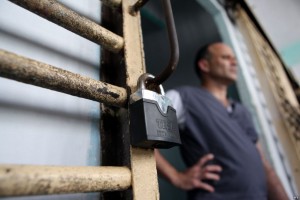 HAVANA, Cuba , September 18, 2013 , www.cubanet.org.- For approximately 15 days, several prisoners complained about cholera cases within the Combinado del Este prison in Havana. So far the authorities of the Ministry of Public Health have not reported anything.
HAVANA, Cuba , September 18, 2013 , www.cubanet.org.- For approximately 15 days, several prisoners complained about cholera cases within the Combinado del Este prison in Havana. So far the authorities of the Ministry of Public Health have not reported anything.
Pedro Pablo de Armas Carrero, an inmate who leads a movement called Inner Reality from Prison (RIDP) ,created on April 9, 2013, in memory of all prisoners dead from hunger strikes in Cuban prisons, told this reporter that on Tuesday, September 17, between 7:00 and 8:00 in the morning, the inmate Iyamil Garcia Benitez, 38, from the town of Parraga, in Arroyo Naranjo, died in that prison.
Armas Carracedo adds that, when his cellmates asked the guards to help the sick man, he was already dehydrated and vomiting blood. He also says that Garcia Benitez Garcia suffered from chronic ulcers.
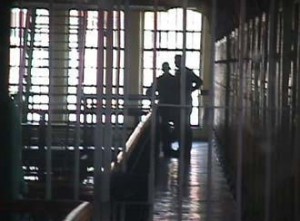 According to medical investigator Yasser Rojas, the cause of death of the prisoner may have been hypovolemic shock. The clinical picture could be complicated both by the bleeding as well as by the dehydration caused by diarrhea, a symptom of cholera.
According to medical investigator Yasser Rojas, the cause of death of the prisoner may have been hypovolemic shock. The clinical picture could be complicated both by the bleeding as well as by the dehydration caused by diarrhea, a symptom of cholera.
According to information received from the prison, on 1 September 14 cases of cholera had been declared among the inmates. Ten of the contaminated were under observation in the center’s center, and four had been referred to outside hospitals.
Although casual contact with cholera-infected people is not a risk for becoming ill, in places where there is poor sanitation and overcrowding, as in Cuban prisons, the disease presents as an epidemic. The pandemic, when serious, is characterized by profoundly watery diarrhea that can lead to dehydration.
The inmates at Combinado del Este prison complain that the roofs leak from the sanitary sewer pipes. The leaks cause dampness in the 12 by 36 foot cells, where up to 36 prisoners live crammed together. The cisterns are totally contaminated by all kinds of insects and rodents. Inmates have to store water in jars and buckets. The prison was built in 1966 and has not had any major repairs.
From Cubanet
18 September 2013
Beyond the Prado / Luzbely Escobar
Central Havana: A Municipality in Danger of Extinction / Miriam Celaya
It’s no secret to anyone that the Cuban capital is falling to pieces. It’s enough to walk around any part of the city to observe the death throes of an urban landscape that is becoming blurred, its buildings disappearing under the combined pressure of time and neglect. No municipality escapes the decline. There are ruins or pre-ruins from the ancient Old Havana — despite enjoying the partial benefits derived from its patrimonial grace and the museum-tourist interest efforts of the City Historian — to the once aristocratic Miramar, of course, saving the marked differences between both areas.
Nevertheless, we can affirm that Central Havana is the municipality displaying the worst state of the buildings. Perhaps because it is the smallest on the whole Island, the most densely populated, the one with the most ancient buildings contained within its small geography and, fatally, the one of least interest to official purposes.
In Central Havana, in addition, a multitude of multifamily buildings from the first half of the 20th century crowd together, old rooming houses and guest houses in precarious condition and almost completely unmaintained, and old shops, worm-eaten theaters and other rundown spaces.
A commercial area during the Republican period, the accelerated deterioration of old businesses and fleabag hotels, many of them closed and propped up, adds a grim note to an urban node that seems marked by misfortune: Central Havana, crowded with inhabitants, right now seems a municipality condemned to disappear.
It’s enough to walk down any of its crowded streets to feel surrounded by this kind of agony of crumbling bricks, peeling plaster, broken sewers, an environment of filth, overflowing trash bins, unpainted buildings, debris, the intense odor of accumulated poverty, at times ill-concealed by the efforts of this or that stubborn resident, who tries to maintain the little piece that he or she miraculously and precariously inhabits safe from the extinction that is upon us.
Only a miracle could save Central Havana, but where would it come from? Perhaps from God? From the government-executioner itself? From its wretched people? There are ever more buildings that succumb and fall to the ground, usually taking with them the life of some stubborn resident who refused to give up his home. Ever more vacant spaces are opening in its neighborhoods and in the hopes of its inhabitants.
It’s true that all of Cuba is dying and succumbing to despair, but today I want to dedicate this complaint, almost a requiem, to the municipality where I live. Allow me to show my readers, in just a few photographs by me and my friends Orlando Luis Pardo and Dimas Castellanos, some images of the landscape that greets my eyes every day and that says much more than any of my words. Take them as an insignificant sample of the immense destruction achieved by more than 50 years of government abandonment and contempt. Here they are.
20 September 2013
The Kindness of the Cuban Aristocracy? / Ivan Garcia
 While in Sao Paulo and other cities in Brazil the outraged people flooded the streets to protest the increase in transportation prices, rampant corruption and the millions in public expenditures for the World Cup and the Olympic Games, in Cuba the men garbed in olive-green govern at their pleasure, supported by a hard autocratic staff and a Constitution that prohibits strikes and anti-government marches.
While in Sao Paulo and other cities in Brazil the outraged people flooded the streets to protest the increase in transportation prices, rampant corruption and the millions in public expenditures for the World Cup and the Olympic Games, in Cuba the men garbed in olive-green govern at their pleasure, supported by a hard autocratic staff and a Constitution that prohibits strikes and anti-government marches.
Because of a twenty cents increase in public transportation, the Brazilian people took the streets. The Castros’ ability to perform ideological somersaults is indisputable. And they are masters in selling a discourse of effort, honest and sacrifice, while living like millionaire capitalists.
The power of the autocracy cannot be quantified. Or can it? A magnate like Bill Gates could be a ruthless monopolist and evade taxes, but he does not control the strings of foreign policy making or with just a simple phone call send a dissident to jail.
The Cuban autocrats do have real power. They control the State in an absolute manner thanks to a network of special services, informers, neighborhood organizations that with a simple order can start an act of repudiation or provoke the beating of any opponent.
Even in former communist countries like East Germany, Czechoslovakia or Hungary, there were workers striking and mass demonstrations, crushed by the treads of Russian tanks and bursts from Kalashnikovs. In 54 years of the Cuban regime there has never been a general strike in the island.
One of the few exceptions was the rebellion of August 5, 1994 in the largely poor and majority black neighborhoods of Cayo Hueso and San Leopoldo in Central Havana. The detonator for the protest — known as “el Maleconazo” — was the desire of people to leave the country. They weren’t asking for political changes, better wages nor demanding that the government hold free elections.
Due to the scientific repression, many Cubans are devious pretenders. If the gate of an embassy opens, as with the Peruvian embassy in April 1980, those same people would leave their red Party card at the door.
Or they would play the game of mirrors learned over decades. They take cover behind political speeches, revolutionary jingles, raise their hands in unanimous consent at a union meeting or respond to a call from the intelligence services and shout vulgarities at the Ladies in White.
The majority of the Cuban population is peaceful. Too much so. Some prefer to take a rubber raft and risk their life crossing the dangerous Florida Straits rather than to become affiliated with a dissident group. With harsh words they criticize the government in public buses or private taxis or maybe while drinking the cheapest rum with their friends or in living rooms in their homes; but that’s it.
If we compare ourselves with Brazil, Cuban could have seen several strikes and lots of massive protests of the outrages. The minimum salary in Brazil is $678 reales or $326 dollars. In Cuba it is $20 dollars.
If you need to buy a home appliance, you have to have access to convertible currency or CUC, a currency in which workers or retired people do not get paid. The products sold in stores for that currency and are taxed between 240% and 300%.
A jar of mayonnaise, made in Cuba, is one-third of the median salary. A bag of frozen potatoes is pretty much the same. From 2003 to date many items sold in hard currency have increased between 40% to 90%.
One hundred dollars in 2003 represents forty-five dollars in 2013, due to the 13% tax levied on the US dollar, decreed by Fidel Castro in 2005, along with the silent price increases for staple products.
In contrast, wages have barely grown in the last twenty years. The sending of remittances by family members from the “other side of the pond” is what supports the basic needs of their family in the island.
It is predicted that in 2013 the regime will receive more than $2.6 million dollars from these remittances. At the same time, the registers at the stores are happily chirping and the subsidies from the State are decreasing. The message from the rulers is loud and clear. Make ends meet however you can, establish a small place to refill lighters or fix old shoes.
The bus fare in Cuba, the genesis of the riots in Brazil, have risen from five cents in 1989 to forty cents in 2013. However, due to the tremendous scarcity of twenty-cent coins, people are paying one peso. To travel in an overflowing bus and with a horrific service.
Nobody has taken the streets to protest. The mute revenge of Cuban workers is to work little and poorly and to steak what they can from the jobs. Fidel Castro never liked democracies. The strikes, protests and free elections give him allergies.
One afternoon during the 1990’s, it is said that someone whispered in the Nicaraguan politician Daniel Ortega’s ear, after his loss in the referendum: you don’t hold elections to lose. Ortega and the compatriots of the PSUV in Venezuela took note.
Cuba, which economically speaking is a failure, has shown that only an autocracy can keep popular discontent in the dark.
If anyone wants some advice as to how to run a country without disturbances, please come by Havana.
Ivan Garcia
Picture from Primavera Digital
Translated by: LYD
18 September 2013
The Hotel International in Varadero will be Demolished / Ivan Garcia
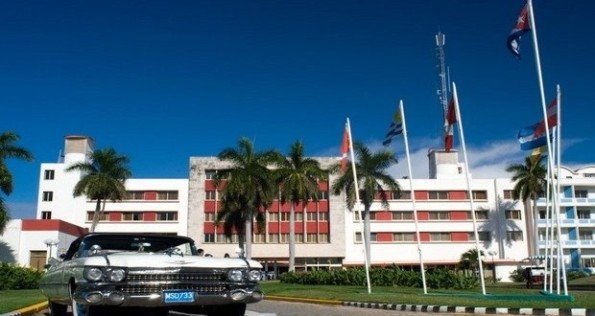 In the 1950’s there were two hotels out of their league: the Hotel National in Havana and the Hotel International in Varadero. The first one is still standing in the heart of Vedado, the second one will be demolished.
In the 1950’s there were two hotels out of their league: the Hotel National in Havana and the Hotel International in Varadero. The first one is still standing in the heart of Vedado, the second one will be demolished.
This was just confirmed by Jorge Alvarez, Director of Center of Inspection and Environmental Control. This institution is in charge of controlling, supervising and regulating the protection of the environment and the rational use of natural resources. The cause? The alarming coastal erosion discovered by the scientists and specialists who were given the task to visit and analyze almost six thousand kilometers of Cuban coast.
Although the authorities have chosen prudence and remaining silent, the conclusions are alarming. “The government realized that the protection of the coasts for an island like Cuba, long and narrow is a matter of national security”, said Alvarez recently.
The study showed that the rising ocean level could damage or wipe off the map around 122 small coastal towns, many beaches would be under water, drinking water sources would be lost and cultivated parcels unutilized. It is possible that by the year 2050 the sea level will rise around 27 centimeters and some 85 centimeters by 2100. It sounds small, but experts explain that this represents a penetration of salt water of up to two kilometers around low laying areas.
In October 2010, they were already talking about the probable demolition of the Hotel International. A wave of rumors and conflicts were set off, inside and outside of the island. Luanys Morales, spokesperson for Gran Caribe, the administrative group of the hotel said: “Is a shame that a rumor can influence the decision of many tourists who have called, alarmed by the news. The Hotel will not be demolished and it is all part of a fallacy invented to grab headlines by people who don’t want what’s good for our island and their time spewing venom in their informal blogs.”
One month later this was corrected, supposedly officially, by a statement made by the Cuban Section of the International Council on Monuments and Sites, signed by their president, the architect Jose E. Fornes, corroborating the rumors about the intentions to demolish the Hotel International in Varadero and the Cabins of the Sun (Cabañas del Sol), both places considered “part of the Cuban and Caribbean modern patrimony,” which marked a milestone in Cuban architecture, due to their advanced design and visual integration between the landscape and the sea.
In an internet forum, Armando Fernandez said “Yes, they will demolish it. And not only the International which is an emblematic hotel of Varadero, but the cabins as well, which in their time represented a national prize of architecture. They made the decision without consulting anyone. I agree that there are important investments that must be made, but not at the expense of a symbol of national identity.”
Around the same time, Teresa, retired, confessed, “I felt a mixture of sadness and indignation when I heard that they were going to demolish the International. I was born in Matanzas and before the revolution, when summer came, my parents would rent a house in Varadero. They loved going to the hotel cabaret and the kids would eat ice cream in the cafeteria. Back then a working family like mine could do those luxury things.”
International Hotel in Varadero was inaugurated on December 24, 1950 in the city of Cardenas, Matanzas. Because of its architectural style it was considered the “brother” of the Fontainebleau in Miami Beach, opened in 1954. Until the mid-80’s, when Fidel Castro decided to develop tourism as one of the most important sources of hard currency, the International Hotel was the tourists’ favorite.
Designed by the Cuban architect Ricardo Galbis, 300 workers took part in its construction. Ninety percent of the materials used were imported from the United States. Its cost was over three and half million pesos, which at that time was valued the same as the dollar. It consisted of 163 rooms and a penthouse. In the lobby, there was mural with an ocean theme, a work by the Spanish painter Hipolito Hidalgo de Caviedes, who in 1937 exiled himself to Cuba. Hidaldo returned to Spain in 1961 and passed away in 1994 in Madrid, the same city where he was born in 1902.
When the Hotel International was inaugurated Varadero already had 17 hotels, among them the Kawama, Miramar, Torres, Playa Azul and Varadero, the oldest of all dating back to 1915. But the hotel boom really started around 1990 with the construction of Melia Varadero, Sol Club Las Sirenas, Sol Palmeras, Brisas del Caribe and Meliá Las Américas.
In 1887, the year of the official founding of Varadero, if a Havana native wanted to swim in its blue and translucent waters he had to have time, patience and energy. To travel to Varadero, he would have to take a train to Cardenas and then from cross to the beach on foot, in a horse-drawn carriage or “carreton” or in a schooner.
Today, the trip of 130 kilometers between Havana and the famous beach resort is along a wide highway which by car or bus takes a little more than an hour. Varadero is still the most popular tourist destination of sun and beach in Cuba. It currently receives more than a million tourist visitors annually and it contributes around 30% of the tourist sector earnings.
Three years ago it was speculated that behind the Hotel International demolition was perhaps the discovery of oil reserves in the area or the construction of new golf resorts. However, the grave damage done to the environment was the reason. I hope there is time to save the eroded Cuban coasts.
Ivan Garcia
Picture Taken from Cubazul.
Translated by LYD
About the Screening of a North Korean Movie in Havana / Ivan Garcia
 Autocrats and Commanders like the cinema. Fidel Castro tried to convince the US director Roger Donaldson to act his part in the film 13 Days, about the 1962 missile crisis.
Autocrats and Commanders like the cinema. Fidel Castro tried to convince the US director Roger Donaldson to act his part in the film 13 Days, about the 1962 missile crisis.
According to Castro’s security people who deserted to Florida, on his property of more than 40 houses, known as Zone 0, to the west of Havana, the only Comandante also had acres of land where they tried out new varieties of beans and vegetables, he had an ice cream factory, another for cheese and a private cinema.
Although he didn’t take matters as far as his North Korean opposite number Kim Jong-il, who, in 1978, gave an order to capture the South Korean movie director Shin Sang-ok to try and establish a movie industry which would reflect an artistic vision of the communist madhouse and the Juche ideology.
The dictator of Pyongyang treasured an archive of more than five thousand films. And he appears as the executive director in the credits of seven of them. We know that in the “command and control” countries art is the property of the state.
This means that the supreme leader can censor a work, approve the budget of a production which praises the regime, or send a dissident intellectual to the slammer.
When many cinema enthusiasts in Cuba assumed the grey chapter of socialist realism was closed, when movie posters only announced Soviet and East European films, these days in Havana they are showing North Korean films.
For the last two decades, 80% of the movies seen on television and in the cinemas have come from the States. That’s the positive part of the gringo embargo. Both the ICAIC and ICRT openly pirate American serials, films and documentaries without paying a cent for the author’s rights.
For the new generation of Cubans, the films they shoot in Pyongyang are a mystery. From 10th to 13th of September, the children’s cinema in Central Havana was the centre of an exhibition of North Korean movies. Not the first in the island. In the 60’s and 70’s they also presented crap there from the Asian country.
The first day, I couldn’t get in. It was invitation only. But I did notice a mob of functionaries and diplomats, dressed in grey tones with small pins of Kim Il-sung on their shirt lapels, looking after the invitees.
Who were not many. Fifty official journalists and ideologues from the Communist Party who, for reasons of protocol attended the premiere of a film in a bellicose style with little artistic merit.
The next day, entrance was open to everyone. It rained at intervals in Havana. At 5:00 in the afternoon they announced the showing of a movie about martial arts. At 8:00, another, about war, the favorite theme of North Korean cinema.
In spite of the fact that entry was 3 pesos (15 cents), people weren’t too enthusiastic. They looked sideways at the poster and asked which Korea the movie was from. When they realized it was from the north, they walked on.
At the entrance, a group of bored pensioners waited for the start of the performance. Two passing peanut and popcorn vendors moved on somewhere else as a result of poor sales.
The woman selling the tickets looked me up and down when I bought two. I told her I was thinking of watching both films showing that day. “I don’t think you have the stomach to watch all the way through both of them”, she predicted.
I have watched dozens of soporific movies from the former Soviet Union and the old East European countries, but the North Korean one topped the list: it was an artistic genocide.
At my side sat a scrawny North Korean diplomat who had forgotten to use deodorant. It seemed that his role was to assess the level of acceptance of the exhibition on the part of the people of Havana.
The man look shocked when people walked out in the middle. Me with them.
by Iván García
Photo: Scene on Wolmi Island, a war movie projected at the premiere of the exhibition of North Korean cinema in Havana. Shot in 1982, lasting 92 minutes and, in North Korea it is forbidden for kids of under 16. It is based on what took place on the Island of Wolmi in September 1950. In order to respond to the general counter-attack of the Korean popular army, the US army tries to land on Inchon Beach in the Yellow Sea. The Wolmi Island soldiers resist for 3 days in the face of 50 thousand soldiers and 500 ships led by Gen. MacArthur. It also shows the role played by the Korean women in the war. It is the star movie of the Pyongyang regime and, in spite of having been shot 31 years ago, it features in the North Korean film weeks in other countries, like in 2010 in London. Taken from the website Movie Firearms Database.
Translated by GH
19 September 2013
Judith / Abel Fernández Larrea
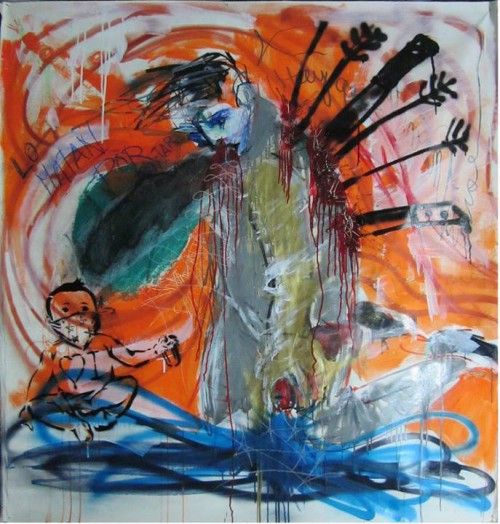
aunt elshvieta was about eighty years old. she was never married. she was small, with short hair and glasses, and out from under them her large nose protruded. at first glance she didn’t seem to have a gender. my father always said that she “looked like woody allen, the american film director.” my mother always scolded my father every time that he, before an imminent visit from our aunt, dropped that comment. but our aunt, on the other hand, didn’t come to visit us very often.
she and my grandmother were sisters, but for some reason they didn’t speak. when grandma died, my father convinced our aunt to come and live with us at haifa. at first, she resisted, but ended up making the trip from birobidzhan to settle in our apartment. she lived with us for a month. at the end, our aunt said that she preferred to live alone and was thinking about moving back to trans-siberia. then my father told her that there was no need to return to any place and he rented an apartment for her close to ours in neve sha’anan.
she sometimes came over for rosh hashanah and other holidays, although none of us followed the tradition. however, she never missed yom hashoah, the day in which we remembered the holocaust. that day, while the majority of the neighborhood walked down the street or went to the synagogue, we made a simple dinner in which my mother prepared little pastries “like in khabarovsk.” our aunt loved these pastries. she could eat ten in one sitting, and then she would say that she felt bad and that she should return to her house. my father always convinced her to stay, and he sent my brother and i to prepare one of the beds in our room for her. at night, my little brother slept with our parents, and i remained in the room with my aunt, which always made me a little apprehensive.
my aunt talked in her sleep. most of the time she said russian slogans, as if she was haranguing workers in a rally. my father told me that she had been commissar, working actively after the war. also, he told me that because of her, many had been expelled from the party, which was the equivalent of losing it all. people even went to the gulags because of my aunt. meanwhile, she had been awarded the order of lenin.
other times, when she slept, she spoke in yiddish. these dreams seemed older, from before or during the war. they were convulsive dreams. i didn’t understand yiddish very well; only a few words. from what i understood, she seemed to talk with someone, saying “my love, my love, don’t do it.” sometimes she said the name of my grandmother. other times, she repeated a name: rudolf. several years passed before i could find the story, before i understood the cause of aunt elshvieta’s dreams.
then i was about to finish high school. i had read something about the great war, about the massacres, the evacuations, the death camps. i was interested in everything related to the german-romanian invasion and the resistance of the partisans. i thought that maybe aunt elshvieta, who had lived during that time, would know more about it.
one day, after i left school, i decided to stop by her apartment on my way home. my aunt wasn’t there, so i had to sit on the steps and wait for her. after a while she appeared, laden with shopping bags. she was happy to see me and i thought that was a good sign, so i helped her carry the bags. my aunt, given her age, climbed the stairs more energetically than i did. i assumed this was because her habit of walking from one place to another when she was a commissar. we put the bags on the table. my aunt wouldn’t stop looking at me and made comments about how much i had grown, even though it had only been a month since she’d been to our house.
–but how big you are, misha! –she said–, every time i see you,you look more like your father!
then she offered me a snack and began to prepare orange juice. i walked over to her while she cut the oranges. she had a steady hand. with one chop she’d part the fruit into halves.
–aunt –i said, finally daring to speak–, can you tell me about the great war?
her countenance changed. the knife stopped, skimming the surface of the orange. my aunt shook her head and continued driving the blade into the fruit. then she put the knife down and began to squeeze an orange half in her hand. her pulse was shaking.
–what do you know? –i said at last.
–i don’t know… anything.
READ THE REST OF THE STORY AT SAMPSONIA WAY HERE
The publication of this story is part of Sampsonia Way Magazine’s “CUBAN NEWRRATIVE: e-MERGING LITERATURE FROM GENERATION ZERO” project, in collaboration with Orlando Luis Pardo Lazo, and a collection of authors writing from Cuba. You can read this story in Spanish here, and other stories from the project, here.
The Carlos III Mall Operates Outside International Standards / Miriam Celaya
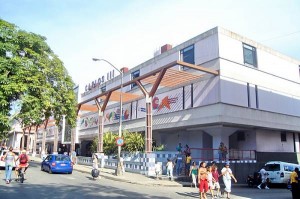 HAVANA, Cuba , September ww.cubanet.org – It’s Saturday , it’s six o’clock, and Anaydée is with Carla, her young daughter, in the “children’s play area” of the well-known Carlos III Market in Central Havana. Whenever she cans she takes some of her savings to please the little girl, letting her climb on the machines with coin slots which, for 25 cents in CUC, for a few brief moments sway and shake the lucky kids whose elders can afford the “luxury” of paying for this ephemeral diversion. A handful of electromechanical devices delight the children while taking a bite out of the pockets of their parents and grandparents. After all, 25 cents for a child’s smile seems a modest price.
HAVANA, Cuba , September ww.cubanet.org – It’s Saturday , it’s six o’clock, and Anaydée is with Carla, her young daughter, in the “children’s play area” of the well-known Carlos III Market in Central Havana. Whenever she cans she takes some of her savings to please the little girl, letting her climb on the machines with coin slots which, for 25 cents in CUC, for a few brief moments sway and shake the lucky kids whose elders can afford the “luxury” of paying for this ephemeral diversion. A handful of electromechanical devices delight the children while taking a bite out of the pockets of their parents and grandparents. After all, 25 cents for a child’s smile seems a modest price.
The Carlos III shopping center is probably the best known and busiest of all those selling in hard currency in the capital. It may be the most “popular” in Cuba, judging by the presence of customers from all provinces circulating through it every day, especially on weekends.
A reduced tropics-communism version of the typical mall of market economies, nestles in one of the populous municipalities in Cuba; this is a key point in the hectic human traffic in the city. It could be raining, hot, cold, or threatening a hurricane, but the Carlos III market is never empty, which is justified perhaps because – despite the insufficient and almost always deficient offerings, or the poor customer service – a variety of services are concentrated there: cafeterias, department stores, food market, hardware, travel agencies, Western Union services and children’s play areas, among others.
So Anaydée, resident of the same municipality, a working single mother who has little time to devote to the entertainment of her little girl, visits the children’s section of the commercial center every time her collateral economic activities (illegal sales of clothes and other articles) allow her to shoulder the extra costs for Carla to enjoy the longed-for “machines” and for them to share a light meal together.
But recently Anaydée told me of her worries about what is happening in the Carlos III “playground.” She thinks this place is not the most suitable for children. The equipment for the entertainment of the kids is nestled right in the midst of a veritable cattle trough for adults: a bar and two outlets for beer and other alcoholic beverages are the environment that welcome the little cars, horsies, games and other kiddie distractions, such a chaotic and promiscuous mixing that it’s literally impossible to isolate children from the vulgar drunken mess and every kind of debauchery that comes together in that area. Anaydée is sure that “something is being violated” there.
While, if in Carlos III the children’s play areas seem designed for the comfort of the families that make their purchases at the mall, with food service included, the truth is that it has become a food-and-drink-trough for the most diverse moral collection, where decent families are involuntarily mixed with marginal types who provide the environment with a dose of vulgar attitudes and filthy language.
So, the kids who enjoy the games are subject to inappropriate conversations and every kind of unpleasant situation between the surrounding adults, many of them completely inebriated, while others consume alcoholic beverages and smoke very close to minors. The situation tends to get worse as the evening progresses. Just visit the area between 7:00 and 8:00 at night, primarily on weekends, to detect the bad atmosphere that reigns there, derived from the social detritus that concentrates to consume the fruits of its illicit dealings, including narcotics trafficking and prostitution. The Carlos III shopping center has many faces.
Usually, even in the Castros’ Cuba, recreation places intended for children have prohibited the sale of alcoholic beverages. A measure consistent with the principle that children should play in a morally healthy and exemplary environment. Such is the case, let’s say, of the playgrounds adjacent to La Maestranza and the Havana Amphitheater, in the Old Town.
However, the compulsive urge to “collect hard currency”* is an interest that overrides the moral formation of our children, so the management of Carlos III—I’m not aware of others—doesn’t seem very committed to the official call to “rescue the missing values.” It’s about guaranteeing sales, the rest doesn’t matter very much. After all, we are talking about a place in Central Havana… Has anyone seen a General in Carlos III Mall
Translator’s note: State-owned stores that sell in hard currency (the so-called Cuban convertible peso, or CUC) versus national money, also known as the Cuban peso, are formally called “currency collection centers.” One of the ways the regime “collects” much of the money sent to Cubans by their families overseas, is through selling goods, only available in these “stores” at greatly marked-up prices.
From Cubanet
17 September 2013
About the Family / Cuban Law Association, Rodrigo Chavez Rodriguez
The great majority of Cuban families are not illiterate but they don’t know that there is a Family Code. They may also be oblivious to the fact that in the Constitution of the Republic of Cuba (which definitely needs to be changed) you will find in Chapter IV, Art. 35; The State protects the family, maternity, and marriage … Until someone explains it to me, and I manage to understand it and feel convinced, I will perhaps continue to be mistaken or each time clearer in my thoughts.
Is it that when people separate, including parents leaving their kids at an early age to emigrate to other countries, almost always for economic reasons, the State protects protects maternity and the family? From what I have just said we can deduce that sustainable marriage cannot exist when, for this or other reasons, the links of a marriage, or voluntary union or whatever, are dissolved, and nor can the State protect marriage and the family, nor indeed the very low level of pregnancies among Cuban women due to lack of many indispensable things.
In other families, aware of what has been decreed and stipulated in the Articles of the above mentioned 1975 Family Code, which can apparently assert that knowledge; this maternity, this marriage and the family are also split up, with the difference that in the case of migrants, here it is about political reasons, their rejection of the government, because they lack one of man’s most precious assets: FREEDOM, and although it brings with it separation and distance from their family, it is necessary for them to search for it and they do find it.
The state recognises in the family the fundamental component of society and attributes to it responsibilities and essential functions in the education and upbringing of the new generations, referred to in Art. 38 of the Law of Laws: Parents have the duty of feeding their children and supporting them in the defence of their legitimate interests and in the achieving of their true aspirations; as well as in contributing actively in their education in their upbringing as useful citizens, ready for life in a socialist society. Why in a “socialist society”? Why if they have to support them in their legitimate interests and just aspirations, and that may not be the interest nor aspiration of the family?
Translated by GH
13 September 2013





